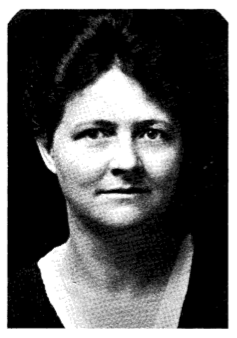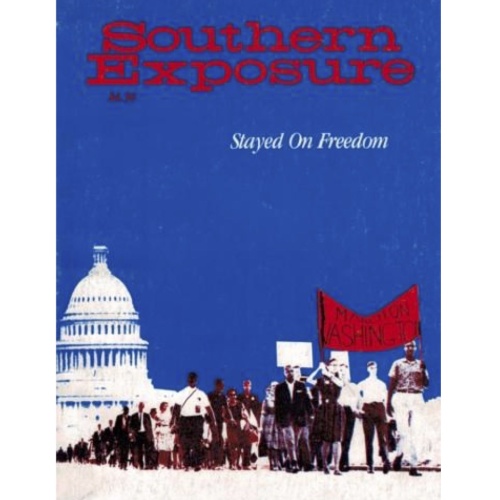FROM THE SOUTHERN EXPOSURE ARCHIVES: Women and lynching

By Jacquelyn Hall
A story in a 1977 issue of Southern Exposure magazine reported on how in the midst of the Great Depression Texas suffragist Jessie Daniel Ames organized a mass "revolt against chivalry" that linked the anti-lynching campaign with the struggle for sexual emancipation. We share it here today in honor of International Women's Day.
On May 3, 1930, a Sherman, Texas mob dragged George Hughes from a second floor cell and hanged him from a tree. Hughes was accused of raping his employer's wife. But the story told in the black community, and whispered in the white, was both chilling and familiar: An altercation over wages between a black laborer and a white farmer had erupted in ritual murder.
The complicity of a moderate governor, the burning of the courthouse, reprisals against the black community -- all brought the Sherman lynching unusual notoriety. But Hughes' death typified a long and deeply rooted tradition of extralegal racial violence.
Unlike other incidents in this bloody record, the Sherman lynching called forth a significant white response. In 1892, a black Memphis woman, Ida B. Wells Barnett, had initiated a one-woman anti-lynching campaign; after 1910, the NAACP carried on the struggle. But the first sign of the impact of this black-led movement on Southern whites came in 1930 when a Texas suffragist named Jessie Daniel Ames, moved by the Hughes lynching, launched a white women's campaign against lynching.
Over the next 14 years, members of the Atlanta-based Association of Southern Women for the Prevention of Lynching sought to curb mob murder by disassociating the image of the Southern lady from its connotations of female vulnerability and retaliatory violence. They declared:
"Lynching is an indefensible crime. Women dare no longer allow themselves to be the cloak behind which those bent upon personal revenge and savagery commit acts of violence and lawlessness in the name of women. We repudiate this disgraceful claim for all time."
Unlike most suffrage leaders, Jessie Daniel Ames brought the skills and consciousness acquired in the women's movement to bear on the struggle for racial justice. The historic link between abolitionism and women's rights had been broken by the late 19th century, when an organized women's movement emerged in the former slave states. Ames herself had registered no dissent against co-workers who argued that woman suffrage would help ensure social control by the white middle class. But as the Ku Klux Klan rose to power in the 1920s, she saw her efforts to mobilize enfranchised women behind progressive reforms undercut by racism and by her constituency's refusal to recognize the plight of those doubly oppressed by sex and race. As she shifted from women's rights to the interracial movement, she sought to connect women's opposition to violence with their strivings toward autonomy and social efficacy. In this sense, she led a revolt against chivalry which was part of a long process of both sexual and racial emancipation.
Two interlocking networks of organized women converged in the creation of the Anti-Lynching Association. From evangelical women's missionary societies, Ames drew the movement's language and assumptions. From such secular organizations as the League of Women Voters and the Joint Legislative Council, she acquired the campaign's pragmatic, issue-oriented style. Active, policy-making membership consisted at any one time of no more than 300 women. But the Association's claim to represent the viewpoint of the educated, middle-class white women of the South depended on the 109 women's groups which endorsed the anti-lynching campaign and on the 44,000 individuals who signed anti-lynching pledges.
Ames' commitment to grass-roots organizing, forged in the suffrage movement, found expression in the Association's central strategy: By "working through Baptist and Methodist missionary societies, organizations which go into the smallest communities when no other organizations will be found there," she hoped to reach the "wives and daughters of the men who lynched." Once won to the cause, rural church women could, in their role as moral guardians of the home and the community, act as a restraining force on male violence.
The social analysis of the Anti-Lynching Association began with its perception of the link between racial violence and attitudes toward women. Lynching was encouraged by the conviction that only such extreme sanctions stood between white women and the sexual aggression of black men. This "Southern rape complex," the Association argued, had no basis in fact. On the contrary, white women were often exploited and defamed in order to obscure the economic greed and sexual transgressions of white men. Rape and rumors of rape served as a kind of folk pornography in the Bible Belt. As stories spread, the victim was described in minute and progressively embellished detail: a public fantasy which implied a group participation in the rape of the woman almost as cathartic as the lynching of the alleged attacker. Indeed, the fear of rape, like the fear of lynching, functioned to keep a subordinate group in a state of anxiety and fear; both were ritual enactments of everyday power relationships.
Beginning with a rejection of this spurious protection, Association leaders developed an increasingly sophisticated analysis of racial violence. At the annual meeting of 1934, the Association adopted a resolution which Jessie Daniel Ames regarded as a landmark in Association thought:
"We declare as our deliberate conclusion that the crime of lynching is a logical result in every community that pursues the policy of humiliation and degradation of a part of its citizenship because of accident of birth; that exploits and intimidates the weaker element ... for economic gain; that refuses equal educational opportunity to one portion of its children; that segregates arbitrarily a whole race ... and finally that denies a voice in the control of government to any fit and proper citizen because of race."
"The women," Ames proudly reported, "traced lynching directly to its roots in white supremacy."
By World War II, the anti-lynching movement had succeeded in focusing the attention of an outraged world on the most spectacular form of racial oppression. The black migration to the North, the emergence of an indigenous Southern liberalism, and the interracial organizing drives of the CIO all contributed to the decline of extralegal violence. This successful struggle against terrorism made possible the emergence of the post-World War II civil rights movement in the South. Only with the diffusion of massive repression, of overwhelming force, could the next phase of the black freedom movement begin: the direct-action assault on segregation in the Deep South.
Tags
Southern Exposure
Southern Exposure is a journal that was produced by the Institute for Southern Studies, publisher of Facing South, from 1973 until 2011. It covered a broad range of political and cultural issues in the region, with a special emphasis on investigative journalism and oral history.
